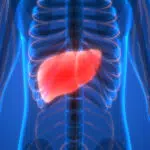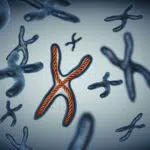Down syndrome occurs across the human spectrum and is the most common chromosomal condition. Each year, about 6,000 babies are born with Down syndrome — a 1 in 700 chance. The prevalence of Down syndrome increases with the mother’s age. It is associated with delays in physical growth, characteristic facial features and intellectual disability. In fact, the average IQ of an adult with Down syndrome is equivalent to that of an 8-year-old.
These are just facts, and like all facts, they can fail to provide a full picture. The truth is that children born with Down syndrome can absolutely go on to live happy and long lives. And with Down Syndrome Awareness Month every October, we can be inspired to learn more about this topic and to celebrate people born with Down syndrome and the medical advancements that increasingly improve their quality of life.
Down Syndrome Awareness Month timeline
The United States National Institutes of Health (NIH) recommends replacing the possessive form "Down's syndrome" with "Down syndrome."
French pediatrician and geneticist Jerome Lejeune works toward his discovery ultimately proving that Down syndrome results from an extra chromosome.
English physician John Langdon Down classifies the genetic disorder now known as Down syndrome.
How to Observe Down Syndrome Awareness Month
Join a Buddy Walk
According to the National Down Syndrome Society, the Buddy Walk "has grown to be the world’s largest and most recognizable Down syndrome awareness program with over 250 walks taking place in 50 states and select international countries."
Volunteer
There are plenty of things you can do during Down Syndrome Awareness Month, but volunteering with one of the many Down syndrome advocacy groups is one of the best and most effective.
Spread the word
The Down Syndrome Information Alliance suggests celebrating Down Syndrome Awareness Month by carrying out 31 random acts of kindness — one for each day in October.
5 Interesting Facts About Down Syndrome
Society has changed for the better
In ancient times, infants with Down syndrome were often killed or abandoned. And even in modern times, many people with Down syndrome were institutionalized.
Pregnancy testing can pinpoint Down syndrome
According to the Global Down Syndrome Foundation, "Down syndrome has nothing to do with race, nationality, socioeconomic status, religion, or anything the mother or father did during pregnancy." Mothers can learn through diagnostics tests during pregnancy whether or not their baby has Down syndrome.
There are three types
Of the three types of Down syndrome — trisomy 21 (nondisjunction) is most prevalent. Translocation and mosaicism account for about 5 percent of cases combined.
People with Down can live full, rich lives
An emphasis on education, a loving and stimulating home environment, and quality health care enable people with Down syndrome to have full and productive lives.
Life expectancy is increasing
As reported by the Global Down Syndrome Foundation, "As recently as 1983, the average lifespan of a person with Down syndrome was 25 years. The dramatic increase is largely due to the end of the inhumane practice of institutionalizing people with Down syndrome."
Why Down Syndrome Awareness Month is Important
It spreads awareness
Down Syndrome Awareness Month teaches people about this topic. As UpWithDowns.org reminds us, we should "celebrate people with Down syndrome and make people aware of (their) abilities and accomplishments."
It's inspirational
Down Syndrome Awareness Month helps us celebrate abilities, rather than disabilities, as various Down Syndrome Associations in the United States teach.
It's encouraging
Down Syndrome Awareness Month can definitely help foster inclusion, understanding, and more opportunities for people with Down syndrome.
Down Syndrome Awareness Month dates
| Year | Date | Day |
|---|---|---|
| 2025 | October 1 | Wednesday |
| 2026 | October 1 | Thursday |
| 2027 | October 1 | Friday |
| 2028 | October 1 | Sunday |
| 2029 | October 1 | Monday |




























































































































